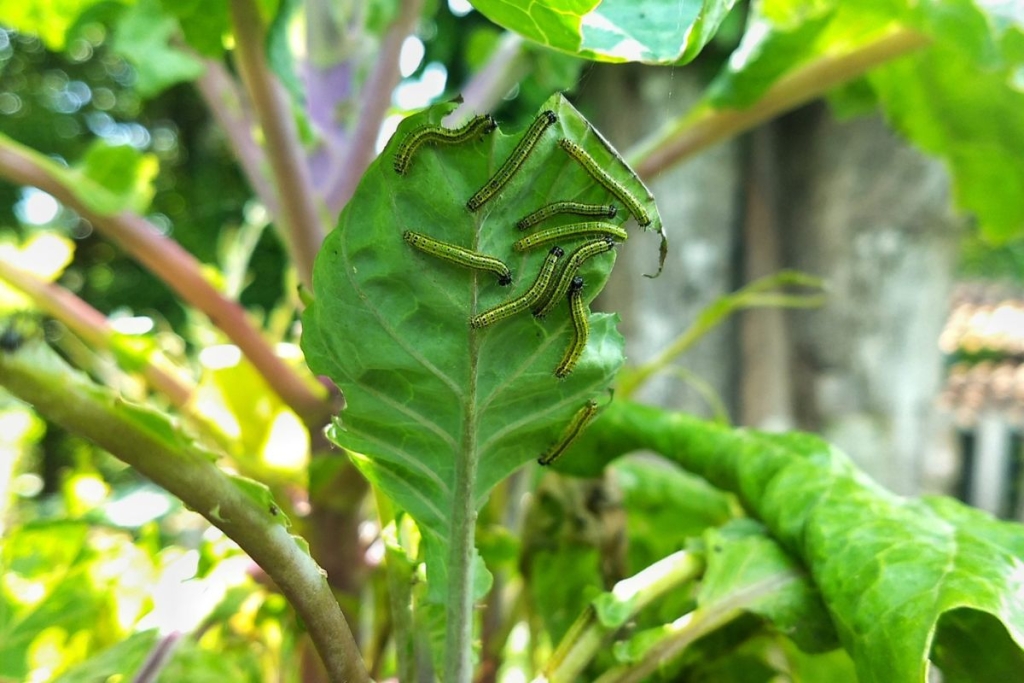Oi pessoal! Espero que estejam todos bem! No vídeo de hoje, quero compartilhar uma dica valiosa para todos que, assim como eu, adoram cultivar couve em casa. Sabe aquelas lagartas irritantes que aparecem de repente e acabam com nossas plantas? Pois é, vou ensinar uma maneira eficaz de evitar esse problema sem usar agrotóxicos.
Let’s explore together how shade cloth can be your ally in protecting your cabbages from caterpillars. Believe me, it’s a simple method that can save your crop once and for all. Let’s go!
Soil Preparation and Initial Care

Para ter uma verdura forte e saudável, tudo começa com o preparo do solo. Antes de plantar, é essencial garantir que a terra esteja bem nutrida e adequada para o crescimento das couves. Além disso, a rega adequada é crucial para manter as plantas sempre saudáveis.
Importance of Soil
Well-prepared soil is the foundation for any healthy crop. Be sure to mulch and turn the soil well to create a favorable environment for your kale to grow. Here are some tips for preparing your soil:
- Organic Fertilization: Use organic compost to enrich the soil. This improves soil structure and provides essential nutrients.
- pH Test: Check the soil pH and adjust if necessary. Cabbages prefer a pH between 6.0 and 7.0.
- Crop Rotation: Alternate planting cabbage with other plants to avoid soil depletion.
Watering in the Right Measure
Maintaining soil moisture is vital, but be careful not to overdo it. Water regularly, but avoid soaking the soil. Some tips for efficient watering include:
- Watering in the Morning: Watering in the morning helps prevent rapid evaporation of water and reduces the risk of disease.
- Drip System: Consider using a drip system for more even and controlled watering.
- Mulch: Use mulch around plants to retain moisture and regulate soil temperature.
Protecting Cabbage from Caterpillars
Even with all the care taken, caterpillars can still appear. They are brought in by butterflies, which lay their eggs on the leaves of the plants. To avoid this problem, the solution is to prevent butterflies from landing on the cabbage.
Using the Shadow Screen
Shade cloth is an excellent option for protecting your plants. Not only does it block out some of the sunlight, it also prevents butterflies from laying eggs on the leaves. Let’s explain how to use it:
Assembling the Structure
- Required Material: Shade cloth (which blocks 50% of sunlight), wood for the frame, nails or ties.
- Assembly: Make a frame with the wood around your cabbages and cover it with shade cloth. This will create a physical barrier against the butterflies.
- Fixation: Make sure the screen is securely fastened and that there are no gaps where butterflies can enter.
Application in Pots
If you grow your cabbage in pots, the procedure is similar. Use sticks to create a structure around the pot and cover it with shade cloth. This will effectively protect your plants. Here’s the step-by-step guide:
- Rods: Place sticks around the pot to create a support structure.
- Shadow Screen: Cut the screen to the appropriate size and cover the vase, fixing it well to the rods.
- Settings: Make sure the screen is tight to keep out butterflies.
Additional Suggestions and Tips
- Alternatives to Sombrite Screen: Any other screen you have available can also work. The important thing is to create a physical barrier.
- Companion Plants: Plant herbs like basil and mint near your cabbage. They help to naturally repel insects.
- Natural Inspectors: Include plants that attract beneficial insects, such as lacewings and ladybugs, which help control pests.
Frequently Asked Questions
1. Does shade cloth harm plant growth?
No, the shade cloth does not harm the growth of plants. It only blocks out some of the sunlight, which can even be beneficial on very hot days.
2. Can I use any type of screen to protect my cabbages?
Yes, any screen that creates a physical barrier against butterflies can be used. Shade cloth is just one option.
3. Does the shade cloth need to be removed when it rains?
No, the shade cloth can be left up during the rain. It is resistant and allows water to pass through, keeping the soil moist.
4. How durable is the shade cloth?
Shade cloth is quite durable, especially when used correctly. It can last for several planting seasons.
5. Where can I find the shadow screen?
You can find shade cloth in agricultural stores, where gardening and agricultural products are sold.
6. Can I reuse the shade cloth in different harvests?
Yes, the shade cloth can be reused in different harvests, as long as it is in good condition.
Did you like this amazing tip? If so, share it with your friends and on your social networks. Leave your comment below and your suggestions. Receive it daily here on our website. Blog of ideas and tips free and follow us on Google News too. Thank you!